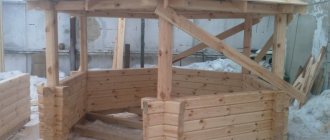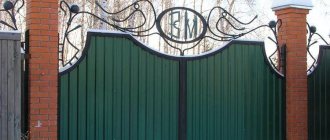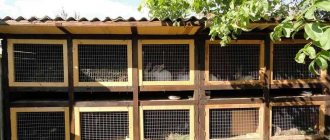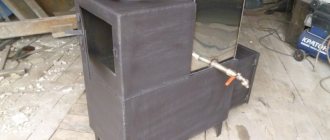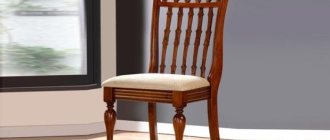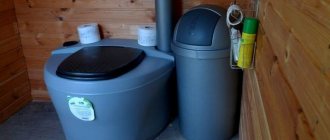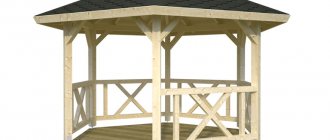Review author: Terra Design School
When there is a body of water on a site, whether natural or artificially created, most often the owners build a bridge across it. This attractive decorative element fits harmoniously into the natural landscape.
A decorative bridge can be made even if there is no pond. This design has a wide variety of options.
Types of bridges for the garden
There are a great variety of garden bridges; depending on the design, the following types can be distinguished:
- straight, suitable for any style of landscape design;
- the suspension bridge looks very attractive, but this masterpiece must be created in such a way that it meets safety rules;
- the zigzag garden bridge looks very original;
- stepped, looks like two stairs between which there is a platform;
- arched, one of the popular forms of bridges;
- stepwise represents a collection of individual elements.
Best place for a bridge
If you place the bridge on a flat surface, it will not look organic. When there is no body of water on the site and the terrain is flat, a pond or stream for a bridge can be created artificially, as well as uneven landscapes; a bridge can be placed on one of the paths to be used.
There is an opinion that bridges look great only in large areas; this is a misconception. Made in a small size, appropriately integrated into the landscape, a bridge decorated with flowers will be a wonderful decoration even in a small area.
Under the bridge, you can make a dry stream from a string of green plants or colorful flowers. If the bridge is installed near a gazebo or recreation area, it will add additional picturesqueness to the landscape.
A gentle method of arranging support
This method is recommended for constructing walkways in an artificial pond. The main advantage of this method is that it does not violate the waterproofing of the reservoir. In addition, such installation of supports is much easier than conventional screwing in piles.
What this method consists of: at the stage of waterproofing the pond, the piles are installed in a plastic container, which is filled with concrete; The container is installed at the bottom of the pond on top of the film. The load-bearing supports of the structure on the shore must be installed on the foundation. This design will be no less durable than walkways on screw piles, and it will serve regularly for several decades.
To make such a gentle design you will need:
Operating procedure:
The difficulty in this process usually arises with measurements. It is necessary to make sure that all supports are the same size, installed at the same level, and that in all containers (usually two are enough) the concrete is poured at the same level.
When the concrete has dried, the load-bearing beams can be secured and the structure of the walkways can be completed.
Bridge material
In order to decide on the shape and material for the bridge, it is necessary to decide what function the structure will perform and where it will be located. A bridge over a pond or dry stream is usually made of concrete, metal, stone, wood, or a combination of several materials.
The most common option for a summer house is a wooden bridge, as this is the most budget option. This is a photo of bridges for a summer house. You can buy a metal bridge ready-made, or you can make it yourself if you have the right tool.
Such a bridge looks very presentable, especially if it is decorated with ornaments. Stone and concrete bridges are not a cheap pleasure. Their main advantage is that they will look harmonious in any style of landscape design.
Bridge construction work on a garden plot
To make the flooring you will need a frame, and you can make it yourself from wood in two ways: by installing the boards on edge or by laying them flat. The first option will require less lumber, but the span will most likely be straight, since bending the board along the plane is a long and difficult task. The maximum that can be done is to give it a slight bend by cutting off part of the edge along an arc. It is much easier to build wooden humpbacked bridges for a summer house from planks placed flat, so we will go this route, considering various assembly possibilities.
To fly through a narrow ditch, two boards with overall dimensions of 3x18x200 centimeters will be enough for the frame. They are connected to each other by thinner crossbars, nailed to the bottom at the ends, as substrates. However, you can connect the foundation logs with two beams; they will also serve as “supports” for the bridge. If the flooring needs to be thrown over a long distance, under the load-bearing boards, along the outer edge of the frame, it is advisable to fill the beams of the appropriate length, with a cross-section of at least 10x10, and only then attach the cross members.
Next, we begin to form the ledges. To do this, we lay shorter boards of the same 3-centimeter thickness directly along the load-bearing joists of the frame at an equal distance from the ends. Thus, if your frame is 3 meters long and you want the steps to be 40 centimeters wide, the next board should be 0.8 meters shorter than the base. If you want higher steps, use 10x10 timber instead of the boards that form them (including load-bearing ones), this will only make the bridge stronger and more durable. True, it will be more difficult to put together such a frame, and, most likely, you will have to use metal plates from the inside of the frame to reliably connect the beams.
Do-it-yourself country bridge
Many summer residents, wanting to make their plot of land unique with the help of decorative compositions, are wondering how to make an original bridge at the dacha? The process of creating a bridge needs to start with a drawing, which you can make yourself.
The simplest bridge model consists of stringers (the curved base of the bridge) and a deck, usually wooden. For structural strength, you can pour a strip foundation for the bridge.
Instead of a foundation, you can put wooden blocks or stones so that the product does not sink into the soil and does not deteriorate from moisture. Stringers or a base can be made of wood, metal or concrete, which should be installed on a prepared foundation. Then, make wooden flooring. The boards are laid on the base and screwed onto self-tapping screws. This is the most reliable and optimal option.
In addition to boards, flooring can be made from logs. Install balusters with railings. To install balusters, you need to measure 20-30 centimeters from the top edges of the boards. Mark the curved lines going to the bottom of the boards. Cut shallow holes along these lines with a distance of a couple of centimeters.
Using a protractor, mark the location of the balusters on the base and make holes for screws or nails. Attach the balusters to the base. The railings are also attached to the balusters with nails or screws.
Landscape Design Ideas
A bridge on a garden plot should be considered as a decor that complements the appearance of the plot. Its functional purpose is revealed only when it is used to make terrain areas passable, and this rarely happens in gardens. That's why design matters.
- The presence of such decor makes a much greater impression on the audience than figurines, garden figurines, etc. And if it is combined with an artificial pond, then the garden becomes a real fairy tale (read our article on how to make a beautiful pond in your country house).
The path runs through a small ravine - the bridge made the crossing safe
- Due to the shapes and materials from which the bridge is made, you can completely transform the perception of the area on which it is installed. Its structure becomes more complex and visual space is added.
- Of course, without water features it is not easy to fit it neatly into the garden, but it is possible if you follow simple tips.
Bridges in various styles
The most common are bridges in the Japanese style, Russian (village) or avant-garde. To install a bridge in the Japanese style, it is necessary to create accompanying elements, that is, a pond or stream.
The design feature of this style is the simplicity of details and strict lines. The materials used are wood and stone. A straight wooden bridge with or without steps is a rustic style.
To make it more natural, you can use parts of tree trunks or branches as railings. Avant-garde style is characterized by a combination of materials and a predominance of arched details.
Design safety
It is important that the bridge is not only stable, but also safe, especially if there are children. The best solution would be a bridge with rounded shapes without sharp corners.
Iron handrails will heat up in the sun in summer, so it is better to cover them with wooden material. The bridge must be safe to walk on.
In order for the bridge to be functional for as long as possible, it must be impregnated with special means. This applies to both wooden bridges and metal structures.
A properly treated wooden bridge will last for many years. Periodically care for the decorative structure, maintaining it in proper condition.
Decorative design
In order for the bridge to harmoniously “merge” into the landscape of the garden, it is necessary to determine in advance its functional features and location. It can act not only as a decorative element, but also perform a practical function. For example, (as already mentioned) to level out differences in soil, cover natural depressions, and serve as a connecting link between different parts of the site.
Healthy! There is a place for a decorative bridge in almost any garden.
After the installation of the bridge across the pond is completed, you need to take care of its decorative design. To do this, we recommend using the following examples:
- Place in the water, on one side, large boulders with rounded sides, as if sharpened by water.
- Sprinkle the approach to the bridge with colored (painted) pebbles.
- An excellent option would be a flowerbed laid out nearby or a separate tree or bush. However, do not cover it with excessive amounts of vegetation, otherwise it may lose all its aesthetic properties.
- In the dark, lamps will be an excellent, accentuating decor. For them to work, it is not necessary to stretch a light cable; it is enough to place elements powered by solar batteries.
Important! Do not overload the bridge over the pond with lamps. Select their number in accordance with the size of the structure.
Interesting Facts
Natural bridges made of trees are actively used in India; this is achieved using the peculiarities of the growth of ficus rubber. Roots also grow from the trunk of this plant, which are directed into the palm trunk lying across the river. When the roots reach the opposite bank, they grow into the soil, forming a bridge.
The zigzag bridge is believed to protect household members from evil spirits.
In Xingshan County, China, a bridge was built along the river, not across it, four kilometers long.
The Norwegians built an unusual bridge designed by Leonardo da Vinci, which he designed for the Ottoman Empire. The artist’s idea, a 240-meter long bridge, was not realized at the time.
Not long ago, a bridge was built across one of the tributaries of the Amazon with a length of 3595 meters.
There is a bridge in Scotland from which dogs periodically jump and most often die. The surviving animals come to the bridge and jump off it again.
In South America, monkeys cross bridges made of spider webs.
